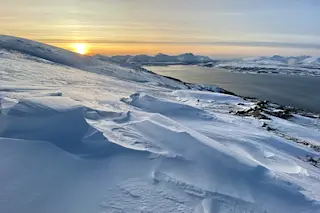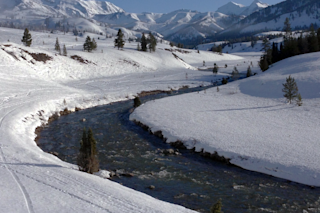As U.S. President Joe Biden prepares to sign historic climate change legislation, the Arctic is reminding us that much more is needed to forestall catastrophic impacts.
Long considered the "canary in the coal mine" for climate change, the Arctic has been warming faster than the globe as a whole. Now, new research suggests it's heating up much more rapidly than previously thought.
Numerous previous studies had found that due to a phenomenon known as Arctic amplification, the region was warming either twice, more than twice, or even three times as fast, as the globe on average. But Finish scientists, using several sets of observational data, have found that over a little more than four decades, the actual rate of Arctic warming has been nearly four times faster.
Some parts of the region saw even more extreme Arctic amplification. For example, sea areas near Novaya Zemlya, a Russian archipelago in the ...














